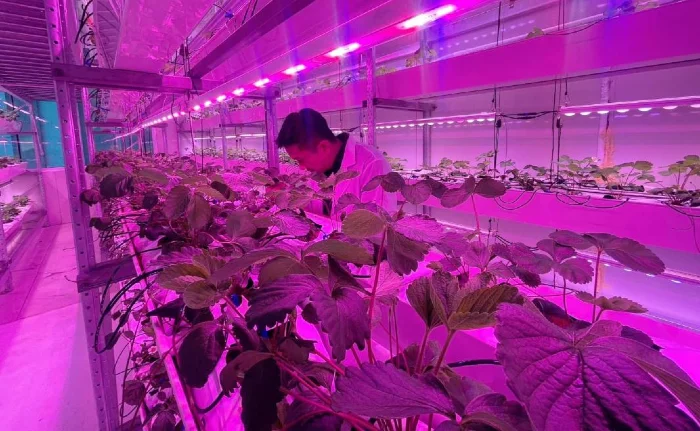In the bustling streets of Bangkok, a curious pinkish hue emanates from a large window on Sukhumvit Road, catching the attention of pedestrians passing by. Intrigued, they peer through the glass and are met with a breathtaking sight: dozens of layers of vibrant strawberry plants, stacked high behind the window. This captivating scene is the creation of Varmers, a pioneering company in the world of vertical farming. Mr. Geert Liezenga, the visionary founder and CEO of Varmers, shares, “People are attracted by the window, and they are more than welcome to come in and find out more about Varmers.”
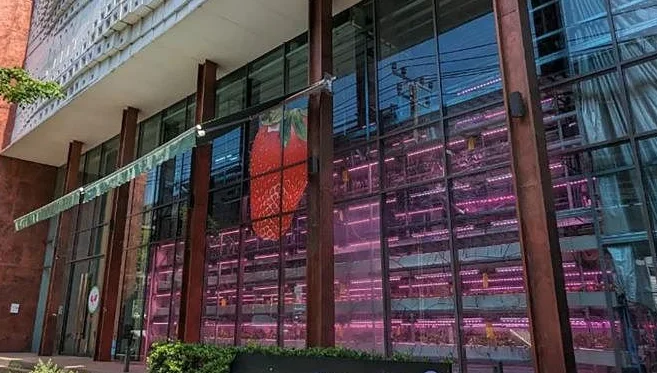
The Dutch Entrepreneur's Bold Move
At 35 years old, Geert Liezenga, a serial entrepreneur, made a life-changing decision to relocate from the Netherlands to Thailand approximately five years ago. In January 2023, he embarked on a groundbreaking venture by planting the first strawberries in Varmers’ vertical farm. What makes Varmers truly unique is its direct-to-consumer model, which delivers fresh strawberries not only to consumers but also to supermarkets and restaurants across Bangkok.
Varmers’ vertical farm spans a modest 100 square meters of land area but stretches an impressive 11 meters vertically. Surprisingly, this relatively small space is equivalent to a sprawling 4,800 square meters of outdoor farmland, and astonishingly, it has the capacity to yield over 800,000 strawberries annually. Even though Varmers has been in production for less than a year, it’s already in the early stages of opening another similar facility and exploring the cultivation of various other crops.
The Blossoming Interest in Indoor Farming
Indoor farming, characterized by cultivating crops within controlled environments, including hydroponics, is gradually gaining momentum in Thailand. While it may still be considered in its nascent stage compared to countries like Japan and Singapore, the concept has piqued the interest of local and international farmers, giving rise to a new generation of agricultural experimentation in Thailand.
Several factors are driving this burgeoning interest in indoor farming. Climate change and rapid urbanization have imposed unique challenges on traditional agriculture. However, technological advancements and innovative farming practices are providing innovative solutions to address these issues.
Presently, Thailand boasts approximately 50 agricultural technology start-ups, with a select few focusing on pioneering farming systems like indoor farming, often referred to as “controlled environment agriculture” or plant factories. The market for smart farming in Thailand exhibits tremendous potential, as global consultancy firm Frost & Sullivan predicts an increase in market value from $106.9 million in 2017 to a staggering $269.9 million in 2022.
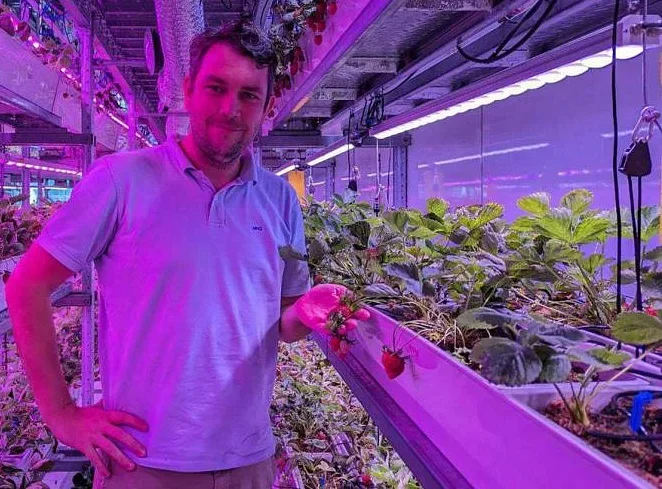
From Greenhouses to Urban Landscapes: The Evolution of Indoor Farming
Indoor farming has come a long way in Thailand, with innovative farms like Varmers utilizing Bangkok’s urban metropolis to cultivate a diverse range of crops, from strawberries to even cannabis. While the concept of farming in covered spaces, such as greenhouses, isn’t entirely novel, recent years have witnessed a paradigm shift. Farmers are now pushing the envelope by employing insulated spaces like warehouses, buildings, and even repurposed shipping containers, strategically placed within the heart of urban landscapes like Bangkok.
These avant-garde methods of indoor farming are revolutionizing the farm-to-table concept. For example, Varmers can seamlessly transition from receiving an order to harvest the fruit and delivering it anywhere within Bangkok, all within a remarkable 30-minute window. As Mr. Liezenga aptly puts it, “It doesn’t get any fresher than that.”
The dynamic landscape of indoor farming in Thailand is poised for a transformative journey, and as we delve deeper into this agricultural revolution, we’ll explore how these innovative practices are shaping the future of food production, sustainability, and consumption in the Land of Smiles.
noBitter: From Software Developer to Kale Campaigner
In the ever-evolving landscape of urban farming in Thailand, one individual stands out as a symbol of unconventional success. Dr. Wilas Chamlertwat, a 46-year-old software developer with no prior agricultural experience, embarked on a journey into the world of indoor farming approximately five years ago. What began as a hobby has since blossomed into an impressive venture known as noBitter, an indoor vertical kale farm with a dedicated customer base of around 5,000 people.
The Unexpected Journey into Indoor Farming
Dr. Wilas Chamlertwat’s transition from software development to kale cultivation may seem unlikely, but it exemplifies the spirit of innovation and adaptability that defines Thailand’s emerging indoor farming sector. Today, he stands as one of the visionary founders of noBitter, a pioneering indoor farm that has garnered acclaim for its dedication to quality and sustainability.
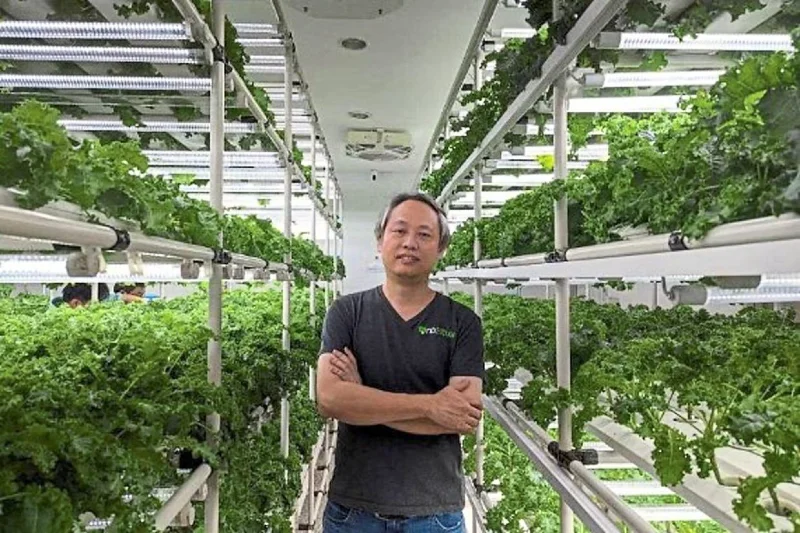
Within the urban sprawl of Bangkok and its surrounding provinces of Nakhon Pathom and Samut Prakan, noBitter boasts the presence of three indoor farms. Remarkably, each of these farms has the capacity to yield up to 20 kilograms of lush, leafy kale every single day. This consistent production is made possible through the meticulous use of hydroponics, a technique that shields noBitter’s kale plants from the threats of pesticides, herbicides, and the unpredictable weather conditions that frequently plague outdoor crops.
The Quest for Nutritional Excellence
Dr. Wilas Chamlertwat passionately asserts, “When you consume kale from our indoor farm, you can be confident that you are receiving the full nutritional benefits of this superfood. You don’t even need to wash it.” The controlled environment within an indoor farm like noBitter allows for the precise regulation of temperatures, humidity levels, nutrient delivery, and sunlight exposure. As a result, the yield, appearance, and even taste of the kale can be carefully controlled. Dr. Wilas proudly adds, “We are able to eliminate the bitter taste associated with kale so we can enjoy its sweetness.”
A Shield Against Climate Change
Beyond the remarkable quality and consistency of produce, indoor farming provides a crucial shield against the adverse effects of climate change. Climate-induced events such as droughts, floods, and sudden weather shocks can wreak havoc on outdoor farms, leading to reduced yields and incomes for traditional farmers. In contrast, the controlled environment of indoor farms like noBitter allows for the reliable production of crops year-round, mitigating the risks posed by climate variability.
The Promise of Precision and Efficiency
The precision and efficiency of indoor farming extend beyond kale to a variety of crops. For instance, Varmers, a leader in the indoor farming industry, leverages this precision to perfectly time seeding and harvesting periods based on customer orders. Geert Liezenga, founder and CEO of Varmers, explains, “It takes 10 weeks for a strawberry to grow, and based on these timelines, we can grow on demand.” This approach not only reduces wastage but also ensures a more efficient and responsive supply chain.
As Thailand’s indoor farming revolution continues to gain momentum, stories like that of Dr. Wilas Chamlertwat and noBitter remind us of the boundless potential and transformative impact of innovative agriculture. In the next section, we will delve deeper into the benefits of controlled environment agriculture, exploring how it fosters sustainability and resilience in the face of global challenges.
The Challenges, and Opportunities, Ahead for The Thai Indoor Farming Scene
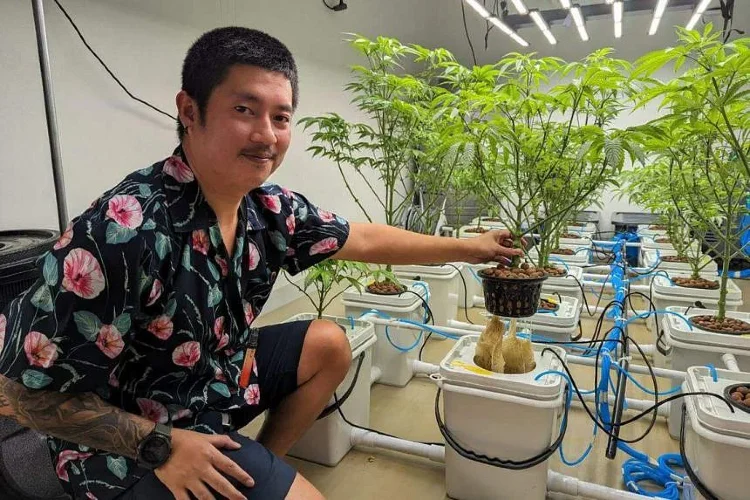
While the allure of indoor farming in Thailand continues to captivate the imagination of entrepreneurs like Dr. Wilas Chamlertwat and Ravin Seesod, it isn’t without its share of challenges and trade-offs. The path to success in this innovative agricultural sector is paved with high capital investments, extensive experimentation, and the time required to establish the initial infrastructure. Also, indoor farming demands increased consumption of both water and energy, resulting in higher production costs, which are eventually passed on to consumers.
The Price of Quality and Control
For instance, a stark contrast can be seen in the pricing of indoor-grown kale compared to outdoor alternatives. While outdoor-grown kale of varying quality is readily available for just 100 baht (approximately US$3.80) per kilogram, noBitter faces the uphill task of competing in the mass market with its indoor-grown greens, which command a significantly higher price tag of 700 baht per kilogram.
To address this challenge, noBitter is diversifying its offerings by venturing into the creation of nutritional supplements derived from kale, a strategic move to broaden its product range and appeal.
The Cannabis Success Story
On a different note, Ravin Seesod’s journey into hydroponic cannabis farming stands as a testament to the potential rewards of indoor cultivation.
Mr. Seesod invested 3 million baht, or roughly $85,000 USD, in his hydroponic cannabis farm and saw his efforts bear fruit when one of his strains earned the first prize in a local competition in October. Judges praised his cannabis for its fresher aroma, cleaner taste, and the absence of pesticides—an achievement that validated his painstaking year-long research and experimentation.
Mr. Ravin’s story proves that despite the formidable challenges, the successes in indoor farming can be deeply rewarding, both economically and in terms of producing superior-quality crops.
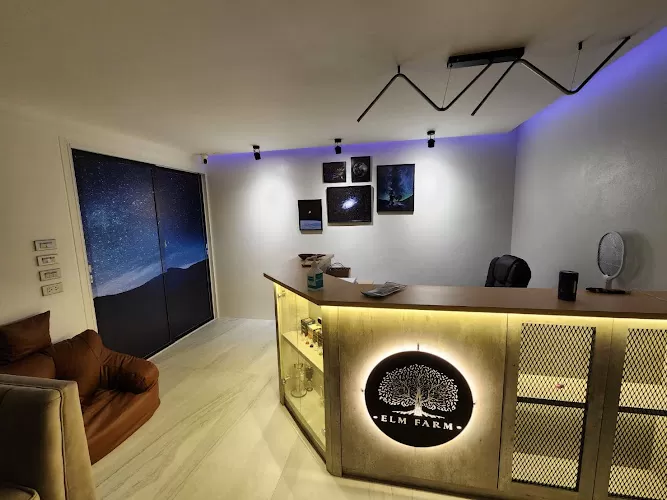
The Road Ahead for Traditional Farming
However, it’s important to acknowledge that despite the growing interest in indoor farming, the traditional agricultural sector in Thailand remains a significant force, at least in the foreseeable future. Assistant Professor Fa Likitswat from Thammasat University’s architecture and planning faculty emphasizes that traditional farming continues to occupy nearly 25 percent of the country’s total land area, employing approximately 12 million workers, or one-third of the total labor force.
Yet, it’s also true that the agricultural sector, once a cornerstone of the Thai economy, has experienced a decline in recent years, shrinking from 11.5 percent of the gross domestic product in 2012 to less than 9 percent in 2022. This decline is multifaceted, stemming from a combination of factors, including demographic shifts, as younger generations opt for urban careers over farming, and structural issues related to an aging population.
A Hybrid Future: Balancing Technology and Tradition
To navigate the challenges facing traditional farming, experts like Prof. Fa suggest adopting a hybrid approach. This approach involves leveraging technology, such as greenhouses, labor-saving devices, and big data analytics, to optimize certain parameters while allowing others to be influenced by natural forces. Greenhouses, for instance, offer a controlled environment that can protect crops from adverse weather conditions while still harnessing natural sunlight.
Big data holds great promise in empowering farmers with detailed insights into factors like rainfall patterns, field conditions, and yield projections. Armed with this information, farmers can make informed decisions to enhance their farming practices and mitigate risks.
Both public and private entities in Thailand have recognized the importance of modernizing traditional farming. Initiatives include the development of mobile apps to aid conventional farmers in weather analysis and the provision of soft loans to facilitate the purchase of smart machinery, such as drones and monitoring systems.
More To Discover
- Scientists Breed Climate-Friendly Cows with 20-Fold Increase in Milk Production
- Tiny Nuclear Battery Promises 50-Year Phone Charge, Breaking Radioactive Ground
- Iceland Unveils World’s Largest ‘Climate Vacuum’ to Tackle Atmospheric Carbon
- New Swedish ‘Electric Soil’ Boosts Barley Growth by 50% in 15 Days
In conclusion, while indoor farming represents a cutting-edge approach to agriculture with its own set of challenges and rewards, traditional farming remains deeply ingrained in Thailand’s agricultural fabric. Striking a balance between technology-driven innovation and time-honored practices is essential for the future of food production and sustainability in the Land of Smiles.
As the agricultural landscape continues to evolve, the nation faces the collective challenge of ensuring that both high-tech indoor farming and traditional farming methods can coexist harmoniously to meet the growing demand for food while preserving the rich agricultural heritage of Thailand.








